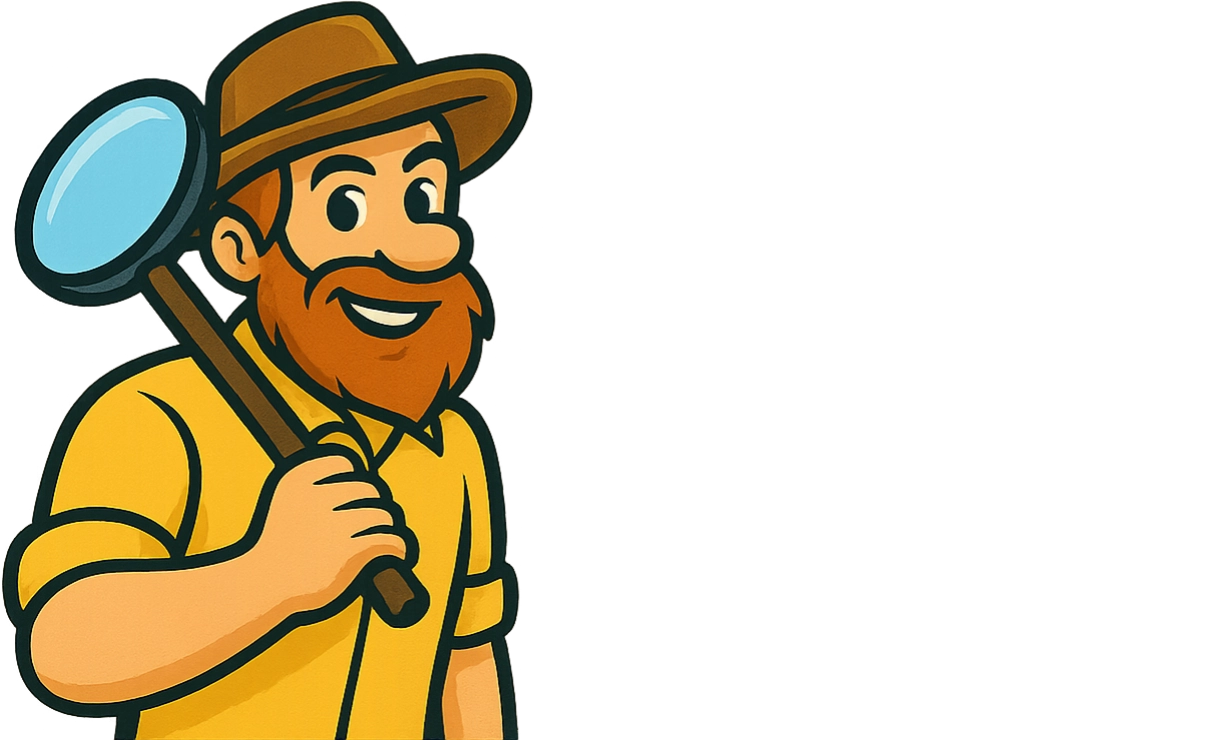
The Beginner's Guide to Search Engine Optimization: Your Path to SEO Success
Sections
#Introduction to the World of SEO
Hey, take a seat and dive with us into the exciting world of Search Engine Optimization (SEO). You’ve probably noticed how important it is for your website to be visible in search results. But don’t worry, SEO is neither witchcraft nor a cryptic book. It’s a fundamental marketing skill about increasing the visibility of your website, attracting more visitors, and ultimately achieving your business goals. This guide will walk you through the essential concepts, step-by-step.
#What is SEO and Why is it Important?
SEO stands for “Search Engine Optimization.” It’s the practice of improving your website to increase its visibility when people search for products or services related to your business in Google, Bing, and other search engines.
The better visibility your pages have in search results, the more likely you are to garner attention and attract prospective and existing customers to your business.
#How Do Search Engines Work? The 3-Step Process
To understand SEO, you first need to understand how search engines work. They have three primary functions:
- Crawling: Search engines send out a team of robots (known as crawlers or spiders) to find new and updated content on the internet. Content can be a webpage, an image, a video, a PDF, etc.
- Indexing: After crawling, they store and organize this content in a massive database called an index. When you search for something, the search engine pulls relevant results from this index, not from the live internet.
- Ranking: When a user performs a search, the search engine sifts through its index and provides a list of content that best answers the user’s query. This ordering of search results is known as ranking.
Your goal with SEO is to make it as easy as possible for search engines to crawl, index, and rank your content as the best answer to relevant queries.
#First Steps: Your SEO Action Plan
Feeling overwhelmed? Don’t be. Start here.
#1. Keyword Research: Understand What People Search For
Before you write anything, you need to know what to write about. This starts with keywords.
- Short-Tail Keywords: Broad, 1-2 word phrases like “shoes” or “SEO.” They have high search volume but are very competitive.
- Long-Tail Keywords: Longer, more specific phrases like “best running shoes for flat feet” or “how to lay tiles in a kitchen?” These have lower search volume but are far less competitive and attract highly motivated users.
Action: Start with simple long-tail keywords that answer frequently asked questions from your target audience. Use a free tool like Google’s “People Also Ask” box or AnswerThePublic to find ideas.

Learn how “New Keywords” offer valuable opportunities for your rankings and why “Lost Keywords” signal the need for action. Use these metrics to strengthen your SEO strategy in a targeted way and continually benefit from organic traffic.
#2. Create and Optimize Content
Now, write your content. Focus on being helpful and clear.
- Answer the Question: Make sure your content directly addresses the keyword you’re targeting.
- Use Your Keyword: Include your main keyword in your page title (Title Tag), the main heading (H1), and naturally within the text.
- Structure Your Page: Use subheadings (H2, H3) to break up your text and make it easy to read.
Remember, you’re writing for humans first, and search engines second.

Discover the top 7 blog writing examples strategies and tips. Complete guide with actionable insights.
#3. Measure, Analyze, Optimize
SEO is a cycle. You can’t just “set it and forget it.” You need to track your performance to see what’s working. Set up these two essential (and free) tools from Google:
- Google Search Console: This shows you how your site performs in Google Search. You’ll see which keywords you rank for, your click-through rate (CTR), and if Google has any technical issues with your site.
- Google Analytics: This shows you what users do after they get to your site—how long they stay, which pages they visit, and more.
Use this data to find pages that are performing well and can be improved, or pages that aren’t performing at all and need a rewrite.
#The Three Pillars of SEO
Almost every SEO task can be grouped into one of three categories. Understanding these will help you organize your efforts.
#1. On-Page SEO
This includes everything you do on your website to improve its ranking. This is where you have the most control. Key elements include:
- High-Quality Content: Creating content that is helpful, well-researched, and directly answers the questions your audience is asking.
- Keyword Research: Identifying the specific words and phrases your target audience uses to find information.
- Title Tags and Meta Descriptions: Crafting the clickable headlines and short descriptions that appear in search results.
- Header Tags (H1, H2, H3): Structuring your content with clear headings to improve readability for both users and search engines.
- Internal Linking: Linking from one page on your site to another to help search engines understand the relationship between your pages and to guide users to more relevant content.
- Image Optimization: Using descriptive file names and “alt text” to explain what your images are about.
#2. Off-Page SEO
This refers to actions taken outside of your own website to impact your rankings. It’s largely about building authority and trust. The most important factor is:
- Backlinks: These are links from other websites to yours. To a search engine, a backlink is like a vote of confidence. Getting links from reputable, relevant websites tells Google that your site is a trusted authority on a certain topic.
#3. Technical SEO
This ensures that your website’s technical foundation is solid, allowing search engines to crawl and index your site without any issues. Key elements include:
- Website Speed: How fast your pages load. Faster sites provide a better user experience and are favored by Google.
- Mobile-Friendliness: Ensuring your site looks and works well on all devices, especially smartphones.
- Sitemap: A file that lists all the pages on your site, making it easier for search engines to find your content.
- Site Security (HTTPS): Protecting your users’ data with a secure connection.
#Fundamentals of SEO: Building Topical Authority
I’m here to show you that SEO is neither rocket science nor voodoo. It’s simply about effectively putting what you know and what distinguishes you online. By regularly writing about your field of expertise and answering relevant questions from your customers, you establish yourself as an authority on your topic—your so-called Topical Authority. This is the foundation of great content.

How Topical Authority can elevate your Google rankings. Learn to harness longtail keywords and build evergreen content to stand out in saturated markets.
#SEO as an Ongoing Project
SEO is a marathon, not a sprint. Prepare to regularly read simple, understandable texts, tips, and guidelines that will gradually introduce you to SEO. The digital landscape changes, and your strategy will need to evolve with it. Tools and resources will help you make the necessary adjustments yourself and continuously improve your website.

Master long tail keyword research with proven strategies that drive real conversions. Get expert insights and actionable techniques for SEO success.
#Summary: Your SEO Roadmap
SEO is an adventure, and this guide is your map. By focusing on the three pillars—On-Page, Off-Page, and Technical SEO—and following a simple workflow of researching, creating, and measuring, you are well-equipped to achieve your goals.
- Learn the Basics: Understand the three pillars.
- Find Your Keywords: Discover what your audience is searching for.
- Create Helpful Content: Write the best answer on the internet for those keywords.
- Cover Technical Basics: Make sure your site is fast, mobile-friendly, and secure.
- Measure and Refine: Use Google’s free tools to track your progress and make improvements.
So, are you ready to take your SEO destiny into your own hands and conquer your niche with us?

This glossary provides clear, concise definitions of key SEO terms such as CTR, Backlinks, Domain Authority, and more. Aimed at beginners, it serves as a foundational tool to help understand and navigate the complexities of search engine optimization, essential for improving website visibility.

